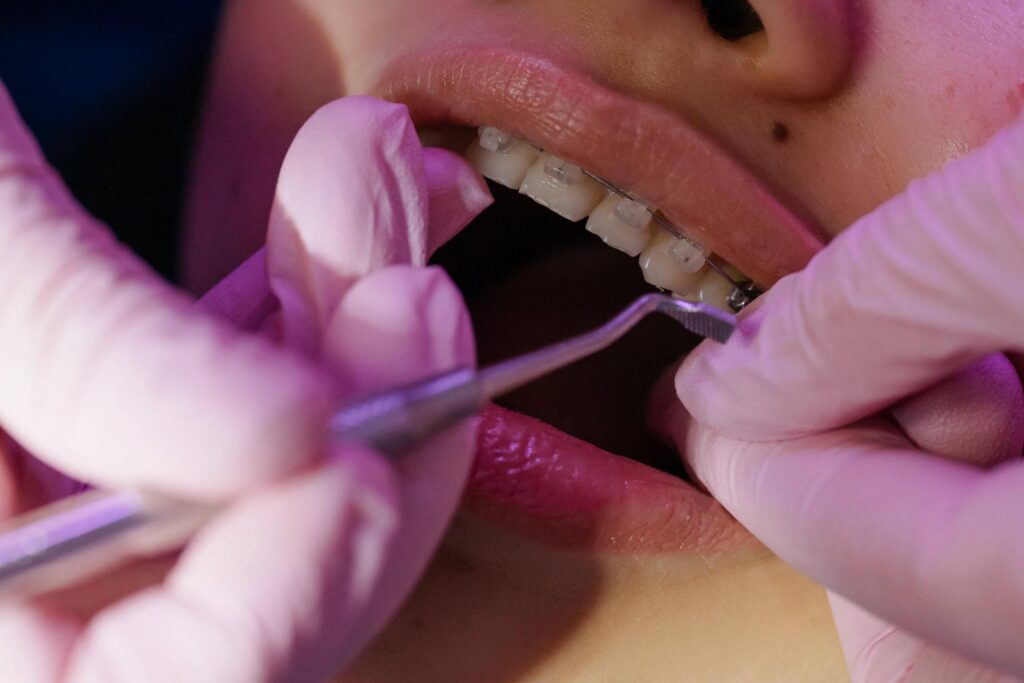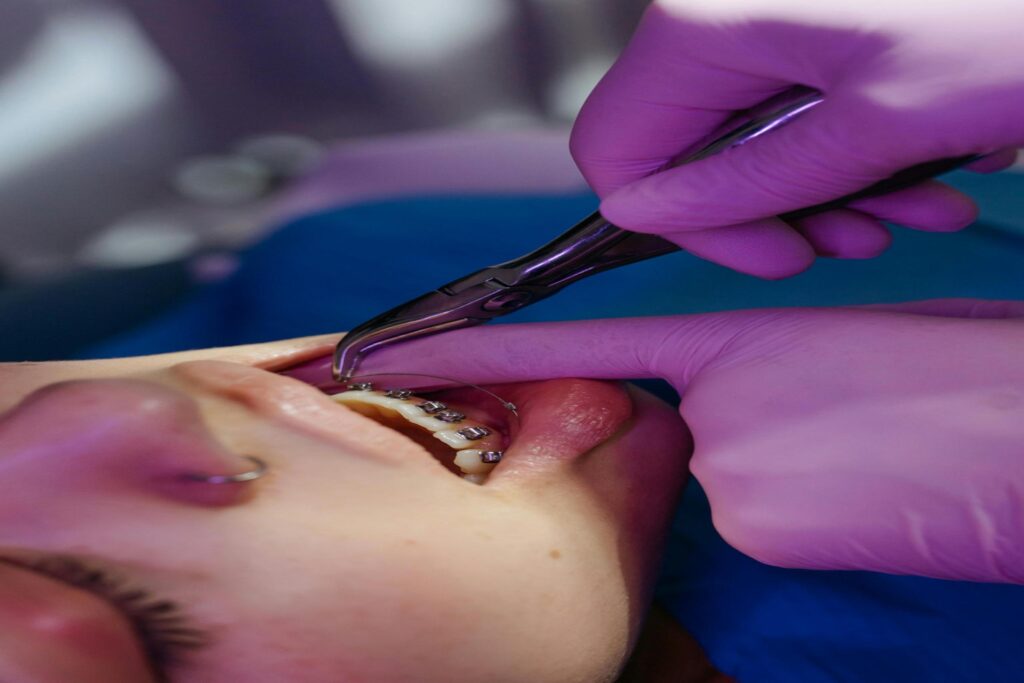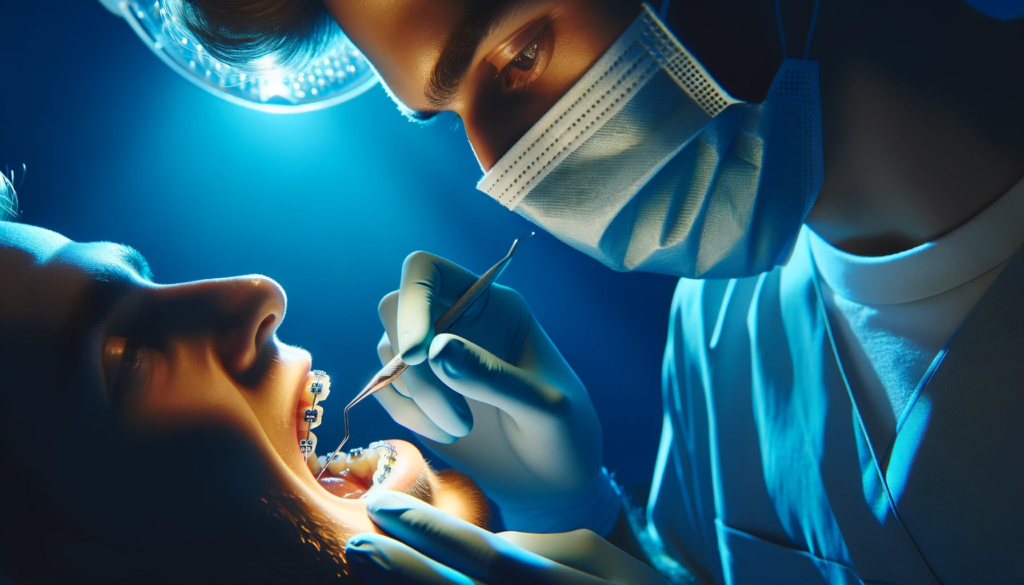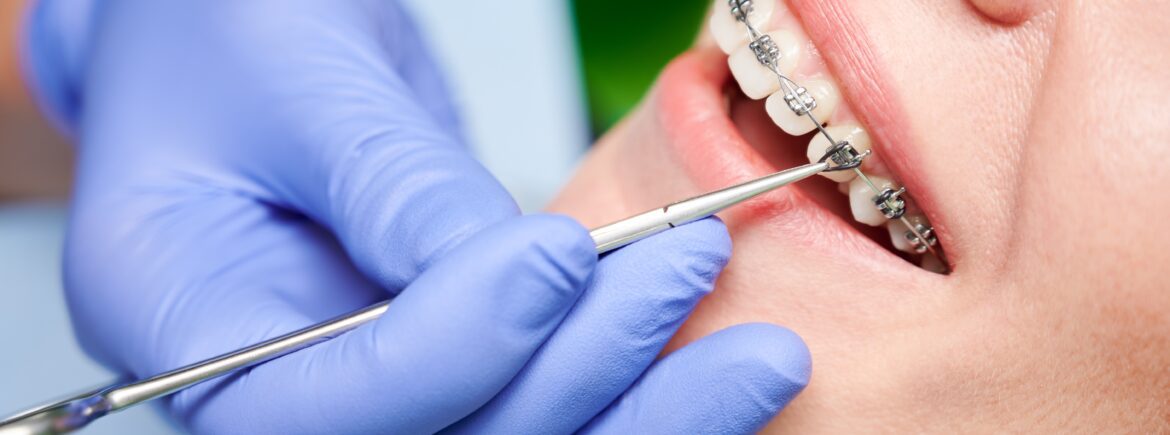Orthodontic Treatment in Perth
Are you looking for solutions for teeth straightening? Our guide on orthodontics is here to illuminate the path to better oral health. If you’re troubled by crooked teeth and aspire to achieve straight teeth, our experienced team of specialist orthodontists is ready to assist. With a focus on harmonizing teeth and jaws, we provide expert care in correcting teeth and jaw misalignment. Our dental clinic in Perth offers a variety of treatments, including modern aligners, tailored to meet your unique needs. Let’s explore how orthodontic solutions can enhance your smile and well-being.

When Do You Need Orthodontic Treatments?
Orthodontics is not just for improving the look of your smile; it plays a crucial role in your overall dental health. Orthodontists are experts in aligning teeth and fixing teeth problems that might affect how you eat or speak. If you find yourself hiding your smile because of gaps or misaligned teeth, it’s a sign you might benefit from orthodontic care.
Orthodontic treatment is ideal for those who need to straighten teeth that are crowded, too far apart, or have shifted since childhood or after previous dental care. However, it’s important to note that the suitability and effectiveness of orthodontics vary based on individual dental profiles and specific needs. Whether these changes are due to natural growth or previous dental procedures, a personalized assessment by an orthodontist is crucial to determine the most appropriate treatment plan.
Choosing the Right Orthodontic Treatment
The use of dental braces, which involve wires and brackets, gently moves your teeth into a new position over time. Not only do these treatments lead to a more confident smile, but they also contribute to better oral hygiene. Wearing braces isn’t just for kids or teenagers; adults too can benefit from these orthodontic appliances. So, if you think your tooth alignment could be improved, it’s worth discussing with your South Perth dentist or orthodontist. They can advise if braces are right for you and which type would best suit your needs.
Types of Dental Braces Available
There are several types of dental braces available to improve your oral health and aid in teeth straightening. Whether it’s traditional braces, ceramic braces, invisible aligners, or lingual braces, each type offers unique benefits. Your orthodontist will help determine which type is most suitable for your mouth, gums, and jaws.
Traditional Metal Braces
Metal braces are the most recognized form of dental braces. They consist of metal brackets and wires that straighten your teeth over time. These dental braces are highly effective for a wide range of teeth straightening needs. They are a tried and true method, having evolved with advancements in orthodontics to be more comfortable than ever.
Despite being more visible than other types, many people opt for metal braces due to their reliability and effectiveness. These dental braces work efficiently to align your teeth and jaws, and the treatment plan can vary depending on individual needs. Plus, with options to customize the colour of the bands, they can be a fun way to express personal style, especially for younger patients.
Ceramic Braces
Ceramic braces are similar to traditional metal braces but use ceramic material that blends with the colour of your teeth, making them less noticeable. They are a popular choice for adults and older teenagers who are conscious about the appearance of braces. While they perform the same function as metal braces, they offer a more aesthetic appeal.
Invisible Braces
Invisible braces, like Invisalign, use clear aligners made from thin plastic trays to shift your teeth into place. These removable appliances are practically invisible, offering a discreet way to achieve a perfect smile. Clear aligner treatment is ideal for those who want to straighten their teeth without the look of traditional braces.
The second major advantage of clear aligners is their convenience. Clear aligners can be removed for eating, brushing, and flossing, making them a flexible option for maintaining oral health during treatment. However, for the best results, it’s crucial to wear clear aligners as prescribed by your orthodontist.
Lingual Braces
Lingual braces are unique because they are placed on the back side of the teeth, facing the tongue. It makes them virtually invisible from the outside. While lingual braces function similarly to traditional braces, their placement requires specialized skills from your orthodontist. They are a great option for those seeking a less visible form of teeth straightening without opting for clear aligners.
Choosing the Right Braces for You
When it comes to selecting the right dental braces, a consultation with an orthodontist is the first step. Your orthodontist will consider factors like the alignment of your teeth, the health of your gums, and what you’re comfortable wearing.

The Orthodontic Treatment Process
The orthodontic treatment process begins with a pre-treatment assessment by your orthodontist. During this phase, they will examine your mouth and discuss the best course of action. Once you choose your braces, they will be fitted to your teeth. After that, regular visits for adjustments and check-ups are essential. These visits ensure your braces are working effectively and your teeth are moving into their desired positions.
Taking Care of Your Dental Braces
Taking care of your dental braces is crucial for the success of your orthodontic treatment. This involves cleaning your teeth regularly with special tools like floss threaders to navigate around wires and brackets to prevent problems like tooth decay. It’s also important to avoid certain foods that might damage your braces, such as hard, sticky, or excessively chewing foods. Proper care of your braces not only keeps them functioning well but also helps maintain the health of your teeth and gums while you wear braces.
Common Orthodontic Problems
Orthodontic issues vary widely, but some are more common than others. Identifying and treating these issues early can significantly improve your oral health and smile.
Crowding
Crowding occurs when there isn’t enough space for all your teeth to fit normally in your mouth. It can lead to overlapping or twisted teeth. Orthodontic treatments can effectively create space and align your teeth properly.
Spacing
Spacing issues happen when there are noticeable gaps between teeth. These gaps can be due to missing teeth or simply because teeth don’t fill the mouth. Braces or aligners can help close these spaces, giving you a more uniform smile.
Overbite
An overbite is when the upper teeth significantly overlap the lower teeth. It can cause wear on your lower teeth and sometimes jaw discomfort. Orthodontic treatment can correct an overbite, aligning your teeth for better function and appearance.
Underbite
An underbite is the opposite of an overbite, where the lower teeth extend past the upper teeth. It can affect your ability to chew properly and may lead to jaw pain. Orthodontics can bring the lower and upper teeth into better alignment.
Crossbite
A crossbite happens when some upper teeth sit inside the lower teeth when the mouth is closed. This unusual bite can cause wear on teeth and sometimes leads to gum problems. Orthodontic treatment can correct a crossbite, improving your bite and smile.
Open Bite
An open bite is when the upper and lower teeth don’t meet when biting down. It can make chewing difficult and may lead to speech issues. Orthodontic intervention can effectively close an open bite and restore normal function.
Rotated Teeth
Rotated teeth are teeth that have turned from their normal position. It can lead to difficulty in cleaning and uneven wear. Orthodontics can reposition these rotated teeth, enhancing both the look and health of your smile.
Orthodontic Treatment: for Children, Teens, and Adults
Orthodontic treatment with dental braces is beneficial at any age for children, teens, and adults. For children, an initial orthodontic evaluation is recommended around 7 to 8 years old. The American Association of Orthodontists recommends that children have their first check-up with an orthodontist no later than age 7.
This early assessment allows orthodontists to identify potential issues, like crowding or jaw growth concerns, and plan for future treatment if needed. In teens, orthodontic treatment typically focuses on achieving a straight smile and correcting alignment issues during their growth spurt. Adults can also benefit from orthodontics; while treatment may take longer due to matured bone structures, the focus extends to improving oral health and aesthetics, considering the unique challenges and needs of adult patients.
Duration of Orthodontic Treatment
The duration of treatment with dental braces varies based on individual needs and the complexity of the case. Typically, orthodontic treatment can last from 18 months to 3 years.
Key factors that influence this timeline include:
-The severity of the misalignment
-The type of brackets used
-The patient’s adherence to the orthodontist’s instructions
Regular adjustments and check-ups are crucial throughout the treatment, allowing for careful monitoring and adjustments to ensure optimal results.

Why Choose Acts Dental for Your Orthodontic Needs
Choose Acts Dental for a brighter, healthier smile. Our skilled dentists are committed to providing top-notch care and tailored orthodontic solutions. Embrace the confidence that comes with a perfect smile. As a dentist in Perth, we are a HBF preferred provider, HCF preferred provider, NIB preferred provider, Bupa preferred provider, and Medibank preferred provider.
Contact Acts Dental today (08) 9474 5083 to begin your journey towards the smile you’ve always wanted.


